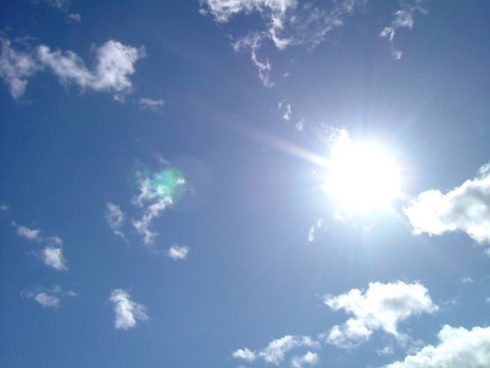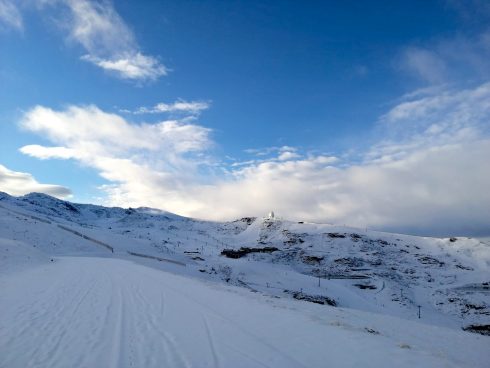THE province of Almería gets around 3,000 hours of sunshine each year. But, as the saying goes, into every life a little rain must fall. In this case it is around 200 millimetres each year, which makes Almeria the droughtiest and most withered place in Europe.
Just to the north of the provincial capital of Almería itself, roasts the Tabernas Desert, the home of Mini Hollywood and familiar to many from films. This is where a cheroot-chewing Clint Eastwood rode out to face Eli Wallace and Lee Van Cleef in The Good, The Bad and The Ugly and where Peter O’Toole and his band of Arabs brought a little tension into the lives of the drivers of Turkish supply trains in Lawrence of Arabia. Almeria province is overpoweringly, witheringly dry.
Yet between 1995 and 2000, Almería exported at least 1,304,127 tonnes of its scarcest resource, water, to Northern Europe and the USA. So insatiable was the demand and so scarce was Almería’s surface water (the regions rivers had long since been exported), that wells up to 500 metres deep were sunk to reach the fossil supplies locked away in deep aquifers for thousands of years. Today, it is estimated at least 500 illegal wells have been sunk into Almería’s aquifer – mosquitoes sucking at the bloodstream of the land.
Once at the surface, this precious stuff was improved with liberal applications of chemicals and then around 40 per cent of it was sealed into attractive, brightly coloured waterproof globes and sent on its travels. The remaining 60 per cent was allowed to leak away into the ground, taking its chemicals with it for the attention of future generations. In return for all this water, a reciprocal river of foreign cash flowed back to Almería. For tomatoes, make no mistake, are Big Business.
Such Big Business, in fact, the plastic greenhouses where water is converted into them have expanded from covering a mere 10 hectares (h) in 1965, to a staggering 50,000h today. This is around a third of the size of Greater London and puts it alongside the Great Wall of China as another man-made object not visible from the moon (according to NASA, none are. The Great Wall of China is not even visible with the naked eye from low Earth orbit, although Almeria shines out like a polished plastic shield).
There is nothing to prepare the eye for the awful reality of these greenhouses. Cast aside all preconceptions based upon neat little structures tucked away in the corner of an English garden, these can be any size. Due to the nature of their construction, there is no theoretical limit – some are larger than entire villages. Like amoebas, they can be any shape, allowing them to smother even the tiniest slivers of a valley. They sit comfortably on sloping ground, allowing them to crawl up hillsides to virtually any altitude where there is water to feed them. And where a mountain defends itself with a fierce gradient, bulldozers are bought in to decapitate it and crown the stump in plastic. From the southern face of the Contraviesa mountain range in Granada, a newcomer can be forgiven for believing the great shimmering mass, stretching from horizon to horizon and lapping languidly against the lower slopes of the mountains themselves, is the Mediterranean. But it is not. Look closely. Those ripples and lines are not distant waves, they are roads. Nor are those darker patches dreaming islands; they are villages and towns (yes, whole towns), swallowed up in the expanding desert of plastic sheets. Those gaily coloured yachts? Hillsides of multi-coloured plastic containers, emptied of their agricultural chemicals and dumped regardless of the cost to the environment. Look another 15 kilometres south. Notice the subtle change in light and hue? That’s the Mediterranean. So let us not call them greenhouses. Let us use the Spanish term: invernaderos, a word almost as ugly as the thing it describes.
In addition to being Big Business, tomatoes are also 96 per cent water. This means every time you pick up a kilo at Tesco, Waitrose or Sainsbury’s (Britain’s big three importers of Almerian produce), you also become one of the millions of proud owners of around 940 grammes of rare Almerian groundwater – the irreplaceable life-blood of countless villages, olive groves and vineyards. Cheap at the price.
But tomatoes are just the starter. Any decent salad includes lettuce and cucumber (both 96 per cent water) and maybe a slice of melon (93 per cent). Add all these goodies together and the total equates to a truly frightening haemorrhage of water from Europe’s driest province. Figures are unreliable and difficult to come by – try asking Tesco, Waitrose or Sainsbury’s how much they import from Almerian greenhouses and you’ll be told: “It is commercially sensitive information.” So for simplicity, let us stick with Almería University’s estimate of 1,403,287 metric tonnes between 1995-2000 for tomatoes alone. At 96 per cent water per tomato, this equates to 1,304,127 tonnes of water.
For those who have difficulty in imagining just how much water this is, it works out at around 1,304,127,000 litres of beer or 2,869,079,400 pints. Or, if sport is more your bag, then think of it as filling 530 Olympic sized swimming pools, or flooding 180 international football pitches to a depth equivalent to David Beckham’s testicles (approximately 1 metre from the ground, although I confess not to have had the dubious pleasure of measuring this directly).
If we factor in the 60 per cent waste inherent in the drip-irrigation systems used by the vast majority of greenhouses, then the figure rises by a further 1,956,190 to a staggering 3,260,317 tonnes. You can work out the equivalent in beer or Beckham’s parts yourself, should the desire take you, although I can reveal it is enough to fill the bowl of the new Wembley stadium in London at least three times over.
Whichever way you look at it, it is a very large amount of water. Particularly, when pretty well all you have was stored up by nature several thousand years ago and is now being converted into salad at a rate far greater than it can possibly be replenished.
But set aside for the moment the fact we are drawing from an ancient and finite supply, there is another problem to do with extracting groundwater that might eventually render even the small amounts left unusable: capillary action. This is the same process that draws tea up into a sugar cube, operates just as effectively between the tiny grains which make up the porous rocks of an aquifer. As the water pressure between these rocky grains falls – as it does when water is converted into salads – then water may move in from somewhere else until the balance is restored and the pressure equalised.
In the case of Almería’s aquifer, the nearest source of such water lies in the 2.5 million square kilometres of the Mediterranean Sea. Therein lies the problem. From all those gripping Geography lessons at school, you may recall that the Mediterranean is rather special as seas go. Most of the world’s seas are essentially just smaller subdivisions of one of the great oceans, geographical areas more or less marked off by land boundaries and named as aids to navigation, rather like a continent is broken down into countries and regions. The point is, there is a relatively free exchange of water between most oceans and their smaller brothers and sisters. Not so with the Mediterranean. Closed in by Europe, Asia and Africa, its only connection with the great currents and pulses of the world’s oceans is over a narrow rock step which connects Europe to Africa beneath the 13 kilometre-wide Strait of Gibraltar. This relative isolation has led to the Mediterranean, like all loners, developing a few peculiar characteristics of its own and foremost amongst these is its saltiness.
With those 3,000 hours of sunshine a year and an average water temperature of 13 Celsius, evaporation rates are high in the Mediterranean. As a result, so is its salinity. The Mediterranean contains around 38.5 per cent salt by volume, compared with a world ocean average of 34.72 per cent. This may not sound like a big difference, but it matters. As water evaporates from its surface, the volume of the Mediterranean is lowered slightly and water pours in from the Atlantic in tidal pulses over the Gibraltar Step. Being less salty and hence, less dense, this Atlantic current sticks to the surface while a heavy Mediterranean counter-current flows beneath it and out to freedom. And that is about the sum total of the Med’s exchange with the great bloodstream of the world. The upshot of all this is, that the time it takes for Almería’s groundwater to become unusably salty may not be too far in the future since the sea water moving in to take its place is around 4 per cent saltier than most others in the world.
But the invernaderos do not have it all their own way. There is an additional heavy drinker on the costa these days: golf. The Costa del Sol is blessed with the highest concentration of golf courses in Europe with over 40 courses packed into a 100-kilometre stretch. Although considerably less offensive on the eye, they are no less aggressive in their use of water. The annual water consumption of one club alone can be equivalent to that of a town of 12,000 people (Villages on the Front Line, BBC WORLD TV, December 22).
As their water table falls, sucked out from underneath them by inervernaderos, golf and tourism, the small, traditional farmers of Andalucía are facing a desperate situation. Rivers and streams that, for centuries, have fed the irrigation channels of countless olive groves, almond groves and vineyards, have simply followed the water table down, retreating into the earth to leave rocky tracks. The skeletons of dead rivers are everywhere.
But of course, this is a distant problem and nothing to trouble the minds of Juan Miguel and his nameless mule as they work their terraces, rich with the gift of water from the Sierra snows. But it should. For down in the distant valley, spilling around the base of the Contraviesa, the first harbingers of the coming storm have already appeared in the form of glittering shards of plastic as the big landowners feed tradition to the bulldozers and smother the land with plastic in return for the quick profit brought in by three salad crops a year.
Almería may be trading its future for short term gain in much the same way as the dirt farmers of Oklahoma did in the 1930’s. That it will all end in tears is almost certain and tears incidentally, contain around the amount of dissolved salt needed to render the land useless – much as the invading Mediterranean will one day do to the once pure groundwater of the province.
So, let us raise a glass to the owners of the invernaderos and their paymasters, Tesco, Sainsbury’s and Waitrose. Cheers!






Fine. Let the poor just die. You can preserve your (their) underground water and protect what used to be Godforsaken land, a freakin’ desert. People like this have blood on their hands, and prefer the misbegotten to simply die, and reduce the surplus population. I wish you were some poor bastard living in a hellish desert, and some little smartass like you came in to save the environment from the natives.
An interesting article on the invernaderos (the ecologists, oddly, are all in favour of these things – I even have a report from the University of Almería saying that the heat reflected from the plastic back into space actually helps to cool the effects of Global Warming)
When did the University of Almeria become “The “Ecologists”?
The ecologists, my favourite group of people, not. I’m sure it is only a matter of time before Yus and friends will advocate the bulldozer again.
I spent 5 weeks in Almeria in 1968 and I never saw any plastic at all. There were smallholdings below the castle of a couple of acres and that’s all.
jimboli61, once climate change began in the Iberian peninsular when the Christians cut all the forests down then the population should have moved away from marginal lands. When you farm marginal lands, like the Romans did in North Africa then desertification follows rapidly – the Sahara is much bigger than it need be for this very reason.
Once the aquifiers have been emptied just where do you think the population of Andalucia will go – rational answers please.
I meant to add that apart from the date of the beginning of plasticland this is a very good article that the Spanish will not heed.
As the years go by and no snow falls this will affect all those villages that literally live off snow melt water. The insanity of selling off Lanjaron water instead of conserving for future generations is sad, very sad.
I would like there would be more people like Bob, a man concerned about the world where he lives.
Indeed,the province of Almeria is suffering a sharp process of desertificaciton because climatologic issues and an a stubborn tree felling since the V century.
I think that the green house agriculture and that people in Germany and UK can eat tomatoes even in winter is not evil. Equally, to play golf is not a sin . But is necessary that the water used for to make possible those activities don´t come of the over explotation of aquifers. It is necessary to encourage the contruction of more dams and the employ of the water collected by these for the replenishment of aquifers. The employ of desalination plants , the reciclying of sewage and, specially, to reforest.
A good way for to fund all these activities is with the incomes of the sale of tomatoes growth in green houses , and the tourism, including the golf tourism.
And to eat salads not only is delicious, too is healthy.